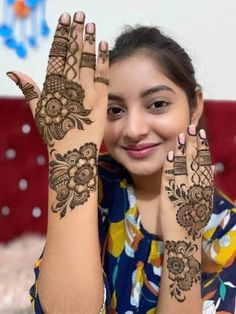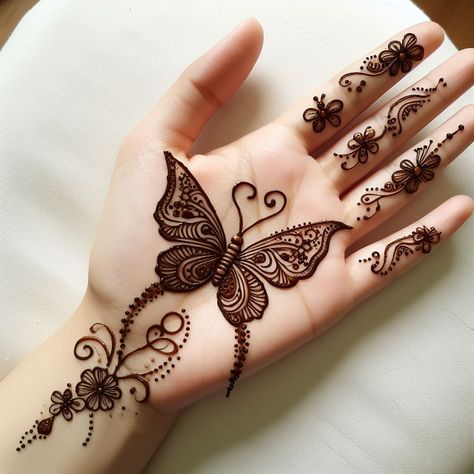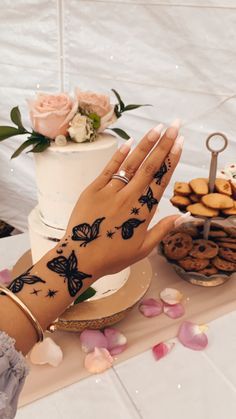

Introduction
Mehndi is a beautiful and traditional art form that is commonly applied during celebrations like weddings, festivals, and parties. While kids mehndi designs can often seem intricate and complex, kids can also enjoy this art! In this blog, we will explore simple, fun, and easy mehndi designs that are perfect for young children.
Why Kids Love Mehndi
Mehndi designs are a great way for kids to feel involved in cultural traditions and celebrations. The process of applying mehndi is fun, and the results look beautiful, giving kids a sense of pride and excitement. Kids can choose from playful, cute, and colorful designs that are easy to create and perfect for their age.
Tips for Applying Mehndi on Kids:
- Choose Natural, Safe Henna: Always use natural henna, especially for children’s sensitive skin. You can also opt for ready-made, child-safe henna cones.
- Keep It Simple: Kids have shorter attention spans, so go for easy and small designs that don’t take long to complete.
- Avoid Sensitive Areas: Be sure to avoid applying mehndi near sensitive areas like the eyes, mouth, or on broken skin.
- Encourage Playful Designs: Kids love designs that are fun and imaginative. Think of animals, hearts, stars, and flowers.
- Get Creative with Colors: While traditional mehndi is brown, consider adding colors like pink, green, or yellow to make the designs more exciting for kids.
Easy Mehndi Designs for Kids
1. Simple Flowers



One of the easiest designs for kids is a simple flower pattern. Start with a small circle and then add simple petals around it. You can add a few leaves or swirls to complete the design. This design can be applied to the palm or the back of the hand.
How to Create:
- Start by drawing a small circle in the center of the palm.
- Add 5-6 simple petals around it, shaped like ovals.
- Add a few small leaves at the base of the petals.
2. Cute Animal Prints



Kids adore animals, so why not create a cute animal design? A small cat face or butterfly on the back of the hand is simple and fun to draw.
How to Create:
- Draw a small circle for the face.
- Add simple eyes, a nose, and a smile.
- For the cat, add whiskers and little ears.
3. Heart Shapes



Heart-shaped designs are perfect for kids who love something cute and symbolic. Hearts can be drawn with curves and swirls to make them look like balloons or flowers.
How to Create:
- Draw a small heart in the center of the palm.
- Add two smaller hearts on each side or above.
- You can draw small dots or swirls to embellish the design.
4. Sun and Moon



The sun and moon symbol is very popular and easy to draw. The moon can be a crescent with a few stars around it, and the sun can have long rays spreading out.
How to Create:
- Draw a crescent moon with some small stars around it.
- Draw a sun on the opposite side, with a big circle and elongated rays.
5. Stars and Dots



A fun and simple design that works great for kids is stars and dots. They can be placed anywhere on the hand and can be as small or large as you want.
How to Create:
- Draw a few small stars using five-pointed shapes.
- Add dots around the stars to give them a glowing effect.
6. Butterflies



A butterfly design is another cute and simple option. Kids mehndi design butterflies are symmetrical, which makes them easy to draw for beginners.
How to Create:
- Start by drawing two large wings on either side.
- Add simple patterns inside the wings like dots or lines.
- Draw a small circle in the center for the body.
Fun Color Options for Kids
While traditional mehndi is brown, kids often love designs that are more colorful. You can use colored mehndi or body paint in shades like:
- Pink
- Green
- Purple
- Yellow
- Blue
These can be applied over the dried mehndi to make the designs more vibrant and attractive to kids.
How to Remove Me Safely from Kids’ Skin
- Start by drawing two large wings on either side.
- Add simple patterns inside the wings like dots or lines.
- Draw a small circle in the center for the body
After the mehndi has dried and you’re ready to remove it, follow these steps for safe removal:
- Let the Mehndi Dry Completely: Ensure that the mehndi has dried for at least 2-3 hours.
- Gently Scrape Off the Paste: Use a blunt object (like a spoon) to gently scrape the dried mehndi off.
- Avoid Water: Don’t wash the hands immediately. Let the mehndi stay on for a few hours to darken before wiping it off.
- Moisturize: After removal, apply a moisturizing cream to the skin to keep it soft and hydrated.
Conclusion
Mehndi designs for kids can be fun, easy, and full of creativity! From cute animals to hearts and stars, there are plenty of designs that can be created quickly and safely. Whether you’re celebrating a special occasion or just want to add a bit of artistic fun, these simple mehndi designs will bring a smile to any child’s face.
We hope this guide inspires you to try out some easy and cute mehndi designs on kids! Happy crafting!
FAQS
FAQ: Simple and Easy Kids Mehndi Designs
1. What is mehndi and is it safe for kids?
Mehndi (or henna) is a natural plant-based dye that is applied to the skin, typically in intricate designs. When used correctly, mehndi is generally safe for kids, especially when using natural, skin-friendly henna. However, make sure to perform a patch test on a small area of skin before applying it more broadly, to ensure there’s no allergic reaction.
2. Can I use colored henna for kids?
Yes, you can use colored henna or body paint for kids if they enjoy vibrant designs. It’s essential to use safe, non-toxic, and child-friendly colors, which are widely available in craft or beauty stores. Always check the labels to ensure they’re specifically designed for body art.
3. How long does mehndi last on kids?
Mehndi typically lasts anywhere from 4-7 days on the skin, depending on the type of henna used, how dark the design is, and how well it’s cared for. To make it last longer, avoid washing the hands too much and keep the design away from soap or water for the first 24 hours.
4. How do I apply mehndi on kids’ hands?
Applying mehndi to kids’ hands is similar to applying it to adults. However, for kids, you should:
- Keep the designs simple and small.
- Use a thin, soft cone or a child-friendly applicator for more control.
- Be patient, as kids may have shorter attention spans. Take breaks if necessary.
- Ensure the skin is clean and dry before applying the paste.



